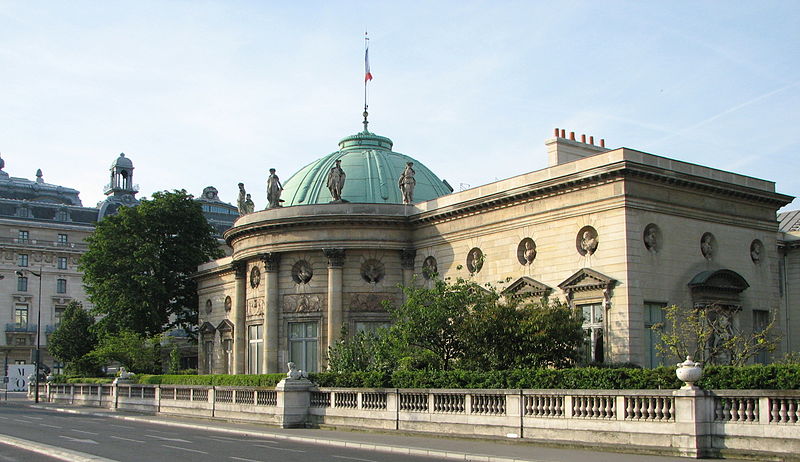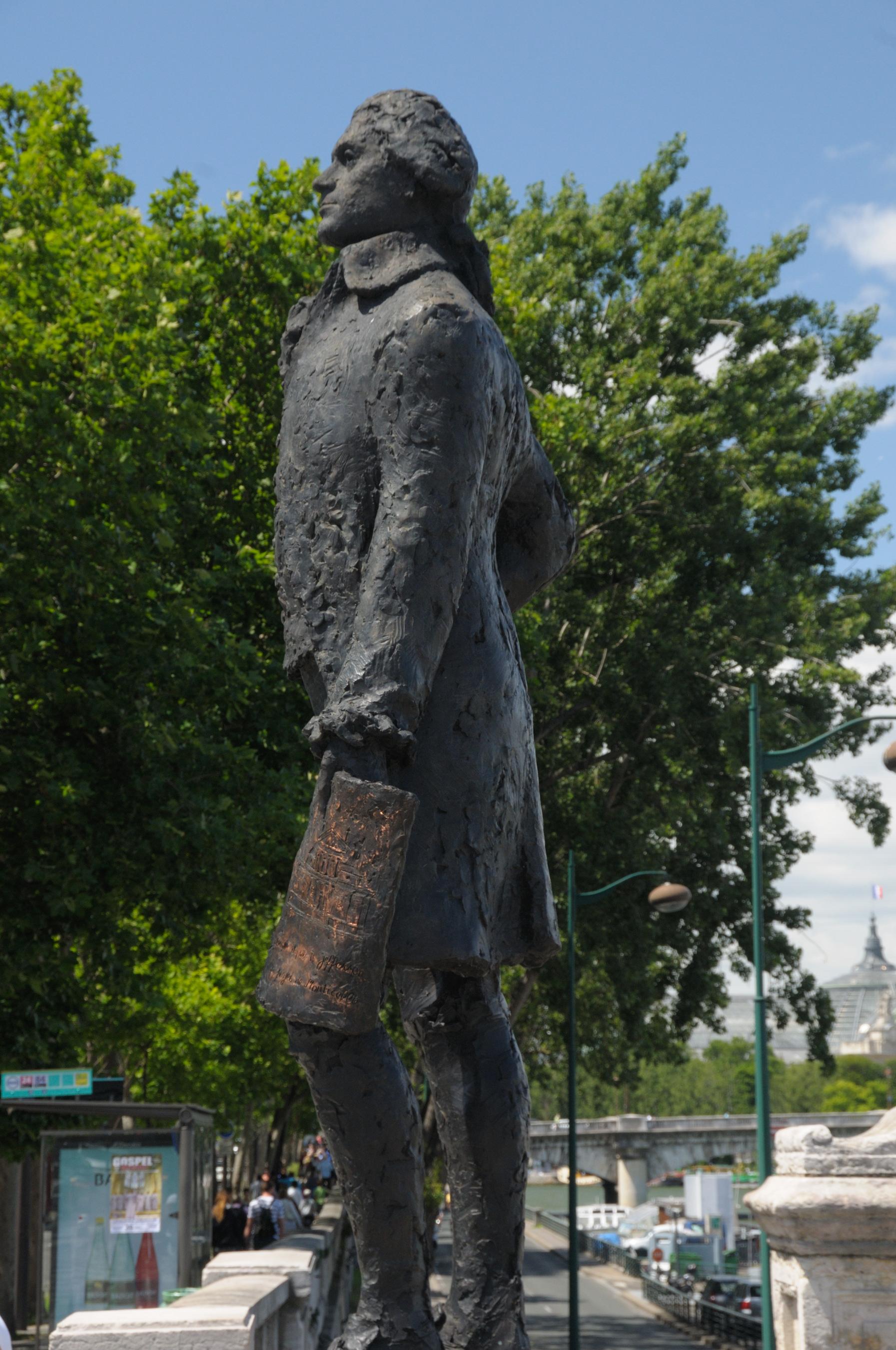
Thomas Jefferson by Jean Cardot
@(2012) Blue Lion Guides
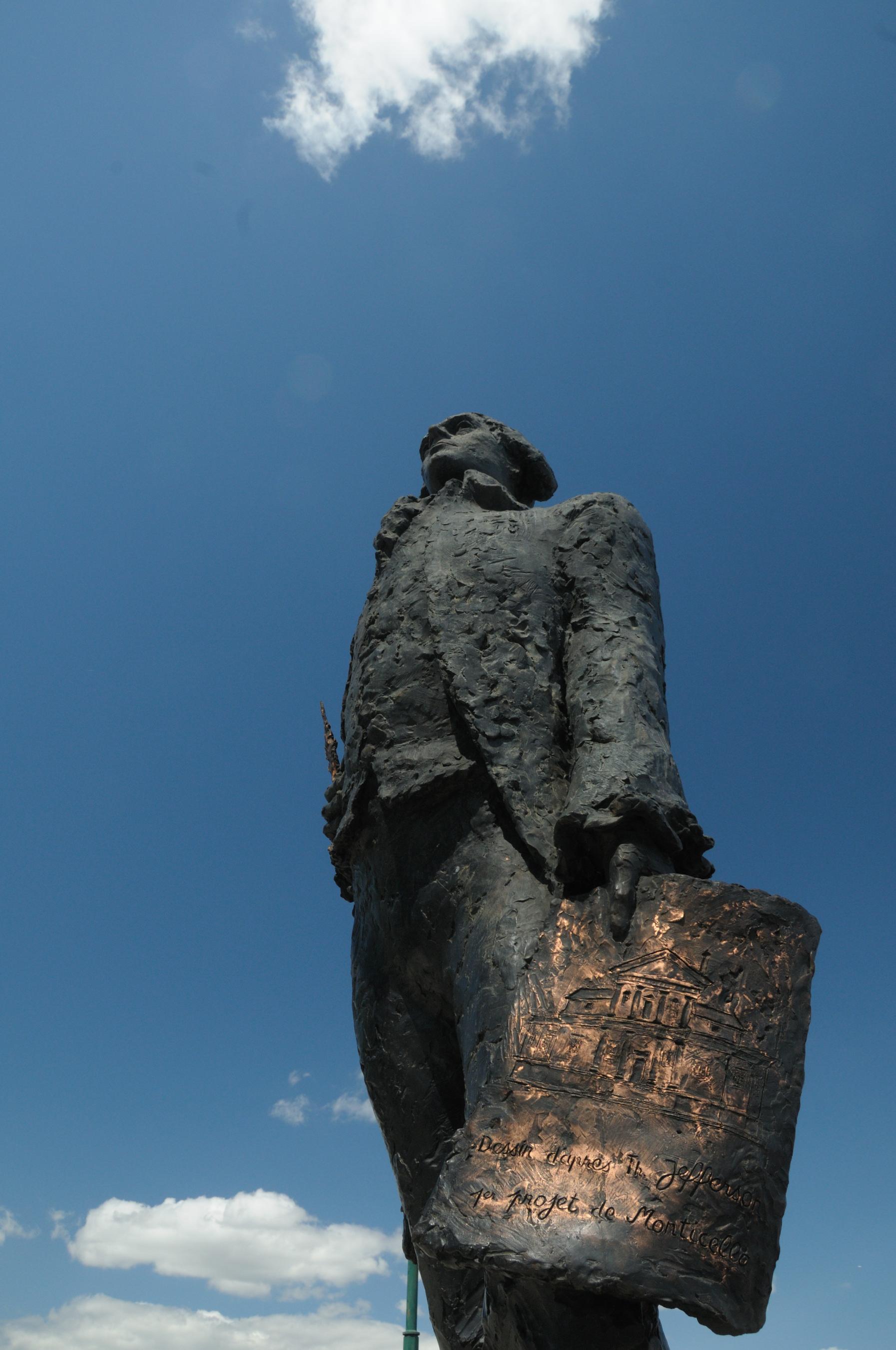
Thomas Jefferson by Jean Cardot
@(2012) Blue Lion Guides
The Stars of the Show
As you're about to learn, our tour starts at this statue of Thomas Jefferson for a reason. But first...
Flash Quiz: Who was the first American expat in France?
Answer: Silas Deane of Connecticut. He didn't know it, however, when he stepped off the boat on July 5, 1776, armed with instructions from the Continental Congress to obtain French financial and military aid for the Revolution. He was unaware that the Declaration of Independence had been signed the day before and that the signers had declared American citizenship for those the British referred to as "rebels."
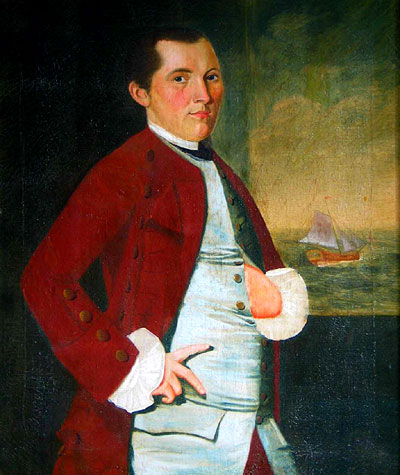
Silas Deane
William Johnston, 1766
Back to our statue: This ten-foot bronze work is by Jean Cardot, who also did the statues of Charles de Gaulle by Paris's Grand Palais and Winston Churchill by the Petit Palais. It was financed by the Florence Gould Foundation (a generous benefactor of Franco-American institutions) and by the sons of art dealer Daniel Wildenstein, to whose memory it is dedicated.
Flash Quiz: Why was the statue placed in this spot?
Answer: Because of the building across the street, the Hôtel de Salm, which inspired Jefferson's design of Monticello, his Virginia home. (Here hôtel is short for hôtel particulier, or town house.) In fact, if you look at what he's holding in his hand, you'll see a sketch of Monticello as it used to look. It's as if it were the late 1780s, and the great man were standing next to us, comparing his drawing with what he sees several feet in front of him (the street wasn't there at the time; gardens ran from the mansion down to the Seine).
Jefferson is one of the stars of our show. Biographer James Parton said that at the age of 32, Thomas Jefferson could "calculate an eclipse, survey an estate, tie an artery, plan an edifice, try a cause, break a horse, dance a minuet and play the violin." Not to mention his going on to serve as the second governor of Virginia (1779-1781), minister to France (1785-1789), the first U.S. secretary of state (1790-1793), John Adams's vice president (1797-1801), the third U.S. president (1801-1809), the founder of the University of Virginia and the president of the American Philosophical Society. For all that, Jefferson is best remembered as a champion of human rights (despite being a slave owner) and the lead draftsman of the Declaration of Independence (at age 33!).
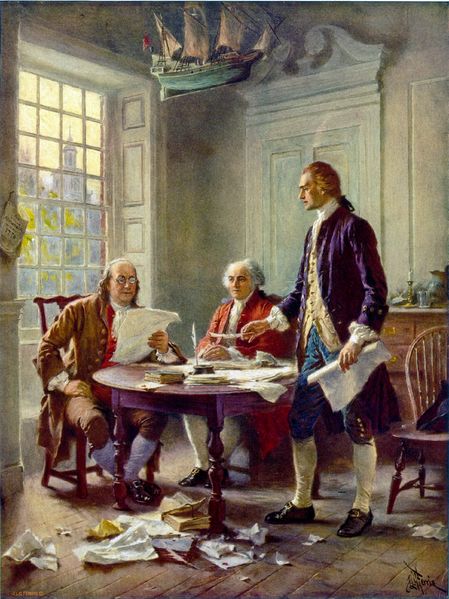
Franklin, Adams and Jefferson Writing the Declaration of Independence, 1776
Jean Leon Gerome Ferris (1863–1930)
As for the other star of our show, Benjamin Franklin was brilliant, charming, influential, often loved and usually recognized wherever he went. Although his country was not well known, when he arrived in France in December 1776 (after having signed the Declaration of Independence five months earlier) he was among the most famous men in the world (and remember, not only was there no Internet back then, there were hardly even any newspapers).
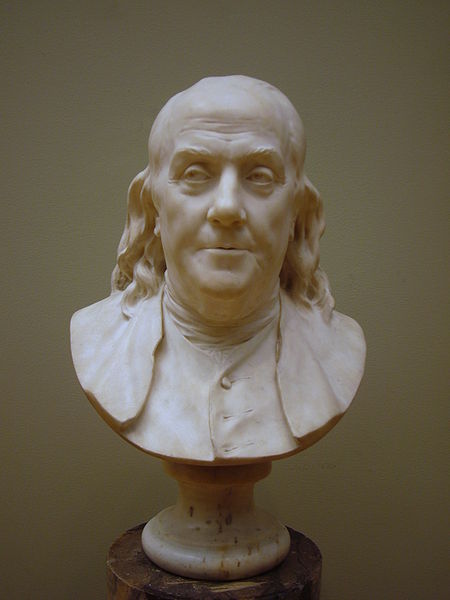
Jean-Antoine Houdon
Benjamin Franklin, 1778
You'll hear a lot of Franklin tales on this tour, but by way of introduction, here is an exchange of correspondence about him between a husband and wife who missed each other terribly. (If you're reading this rather than listening to it, note the spelling, punctuation and capitalization.)
John Adams to Abigail Adams: My venerable Colleague enjoys a Priviledge here, that is much to be envyd. Being seventy Years of Age, the Ladies not only allow him to embrace them as often as he pleases, but they are perpetually embracing him.-I told him Yesterday, I would write this to America.
Abigail to John: You must console me in your absence by a Recital of all your adventures, tho methinks I would not have them in all respects too similar to those related of your venerable Colleigue.
Abigail Adams was not the only one who disapproved of "Dr." Franklin's freewheeling ways: Her stuffy, prudish husband also had difficulty digesting his compatriot's personality. But who do you think got farther in negotiations with the French?
Before we move to our next step, please watch and retain the view of the building opposite to the statue of Jefferson: you can't miss the Hôtel de Salm with its curved central section and its succession of windows and semi-columns. Does it recall something? Let us find out in our next chapter.
